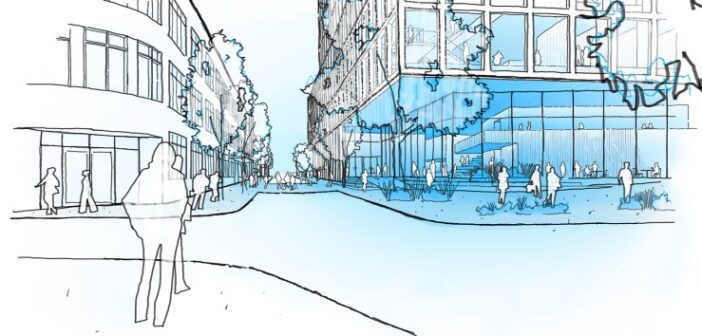Providence commission approves Brown’s Institutional Master Plan, including lab space for cutting-edge life sciences research.
The Providence City Plan Commission unanimously approved Brown University’s new Institutional Master Plan at its Tuesday, Sept. 19, meeting.
The approval provides the authorization required for Brown to proceed with two significant projects—an integrated life sciences building in the city’s Jewelry District and an athletics practice facility on College Hill. The CPC’s public hearing and vote followed a series of community meetings in which Brown leaders detailed plans for both projects with local residents, neighborhood associations, community groups, and elected officials.
Brown’s master planning process and community outreach ensures its planning efforts are carefully coordinated with the city, says Russell Carey, executive vice president for planning and policy, advancing a productive relationship between the University and its home city.
“Carefully planning major projects with city leaders and residents is our responsibility as a committed neighbor and community partner,” Carey says. “We expect the life sciences building to continue the Jewelry District’s growth as a nexus for biomedical innovation and economic development, while the practice facility at our athletics complex will mitigate existing noise impacts on neighbors. Both projects advance Brown goals and align with the needs of the state, city, and the neighborhoods in which they’ll be based.”
Brown’s planned integrated life sciences building will include state-of-the-art laboratory space for researchers in biology, medicine, brain science, bioengineering, and public health. The selected location for the 300,000-square-foot, seven-story research facility will be on Richmond Street in the heart of the Jewelry District, across from The Warren Alpert Medical School near Ship and Elbow streets. The modern facility will expand laboratory space for scientists working on pressing health challenges, and the building will serve as a new focal point in a neighborhood becoming a hub for biomedical innovation.




